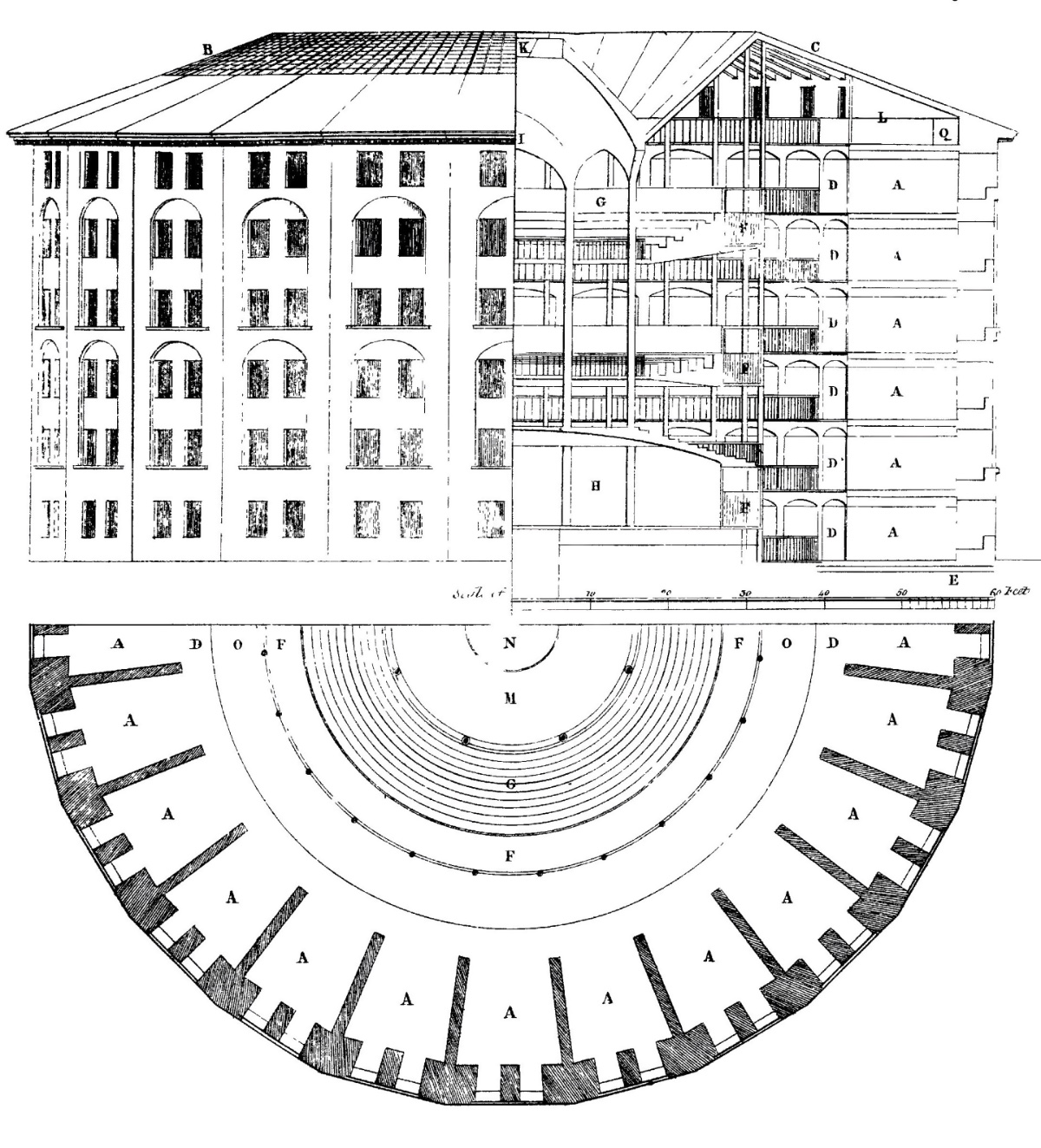Downloads
DOI:
https://doi.org/10.7480/spool.2019.1.3889Keywords:
apparatus, dispositif, panopticon, control, affordance, disciplinary societies, societies of controlAbstract
When Michel Foucault introduces the term, dispositif, commonly translated as ‘apparatus’, he uses the architectural example of the Panopticon to illustrate how power is exercised. A building, according to this line of thinking, seemingly has the capacity to exercise control on its occupants. But is this really the case? This paper examines the thinking of Foucault on the subject, and questions to what extent we can conceive of a building as being in and of itself an apparatus. It goes on to explore Foucault’s subsequent reflections on the subject in his interview with Paul Rabinow, ‘Space, Knowledge and Power’, where he seems to qualify his earlier remarks on the Panopticon. It then opens up the theory of affordances to question whether a building – or any other entities that could be perceived as operating as a tool or mechanism within the social realm – has the agency to control behaviour. Finally, the paper introduces Gilles Deleuze’s subsequent remarks in ‘Postscript on the Societies of Control’ where he contributes to the debate about the political agency of form by arguing that in our present age there has been an erosion in the hegemony of the physical, and current forms of control are more gaseous and invisible in their operations than a mere physical building. The paper concludes that it is too simplistic to regard a building in and of itself as an apparatus. At best it could be perceived as an element within a ‘system of relations’ that might constitute the apparatus.
How to Cite
Published
Issue
Section
Categories
License
Copyright (c) 2020 SPOOL

This work is licensed under a Creative Commons Attribution 4.0 International License.

References
Deleuze, G., & Bacon, F. (2003). Francis Bacon: The logic of sensation. U of Minnesota Press.
Deleuze, G. & Guattari, F. (1987). A Thousand Plateaus: Capitalism and Schizophrenia. 1980. Trans. Brian Massumi. Minneapolis: U of Minnesota P.
Derrida, J. (1987). The Truth in Painting, trans. Geoff Bennington and Ian McLeod (Chicago, 1987), 61.
Foucault, M. (1980). Power/knowledge: Selected interviews and other writings, 1972-1977. Pantheon.
Foucault, M. (1997). Panopticism (extract). Rethinking Architecture: a reader in cultural theory, 356-367.
Foucault, M. (1997). Space, knowledge and power (interview with Paul Rabinow). Rethinking architecture: A reader in cultural theory, 367-380.
Foucault, M. (1979) Discipline and Punish, Alan Sheridan (trans.), London: Penguin.
Gibson, E. J., & Pick, A. D. (2000). An ecological approach to perceptual learning and development. Oxford University Press, USA.
Gibson, J. (1977). ‘The Theory of Affordances’, in Robert Shaw and John Bransford (eds.), Perceiving, Acting, and Knowing, London: Wiley.
Gibson, J. (1979). The Ecological Approach to Visual Perception, Hove: Psychology Press, 1979.
Jameson, F. (1997). Is space political?. Rethinking architecture: in Neil Leach (ed.), A Reader Rethinking Architecture. 255-69.
Jencks, C., & Valentine, M. (1987). THE ARCHITECTURE OF DEMOCRACY-THE HIDDEN TRADITION. Architectural Design, 57(9-10), 8-25.
Lacan, J. (1975). De la psychose paranoïaque dans ses rapports avec la personnalité, éd. du Seuil..
Lambert, G. (2002). The non-philosophy of Gilles Deleuze. A&C Black.
Latour, B., & Johnson, J. (1988). Mixing humans with non-humans? Sociology of a few mundane artefacts. Social Problems, 35(298-310).
Le Corbusier, (1989). Towards a New Architecture, Frederick Etchells (trans.), London: Butterworth Architecture, ‘Architecture ou Révolution’ was to be the original title of Vers Une Architecture.
Scully, V. (1974). Modern architecture: The architecture of democracy. G. Braziller.
Wainwright, O. (2013). Louis Kahn: The Brick Whisperer. The Guardian. http://www.theguardian.com/artanddesign/2013/feb/26/louis-kahn-brick-whisperer-architect
Wright, F. L. (1939). An organic architecture; the architecture of democracy. Mit Press.
Wright, F. L. (1945). When democracy builds. Chicago: University of Chicago Press.



